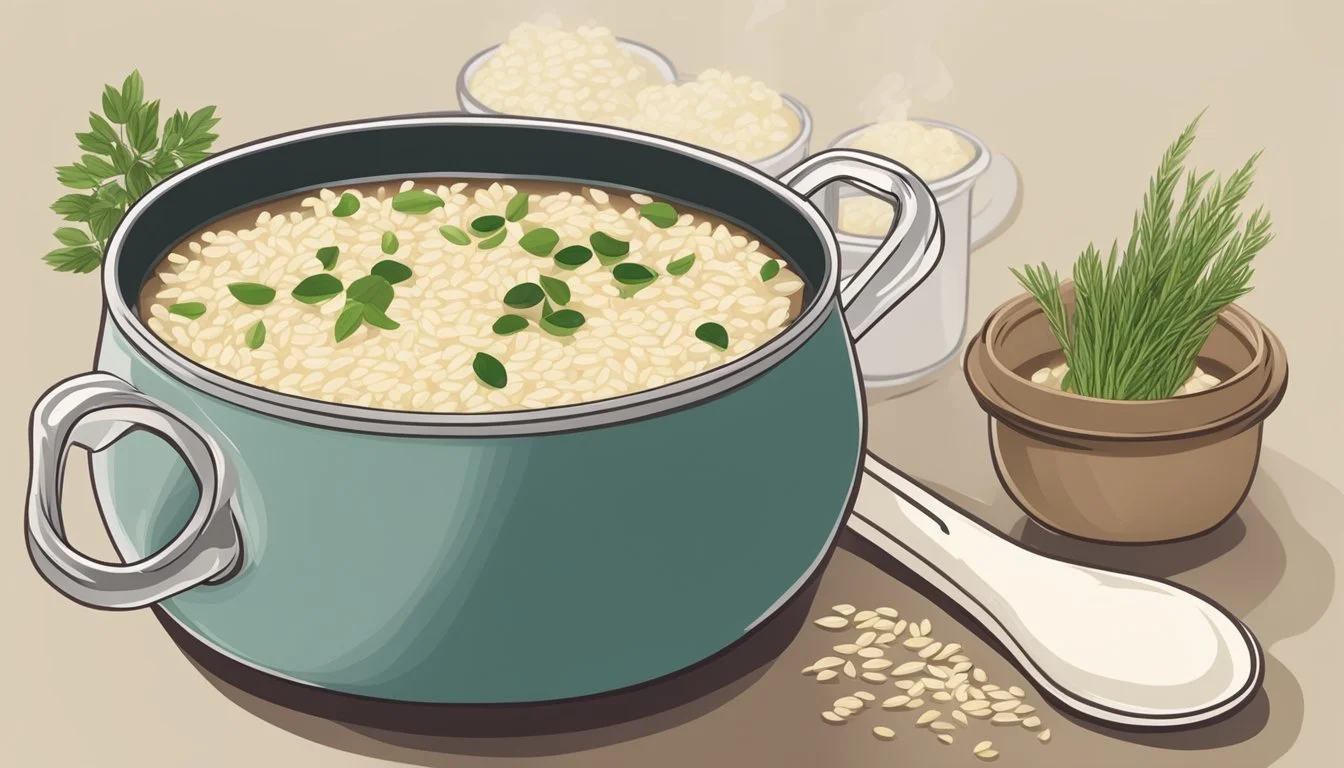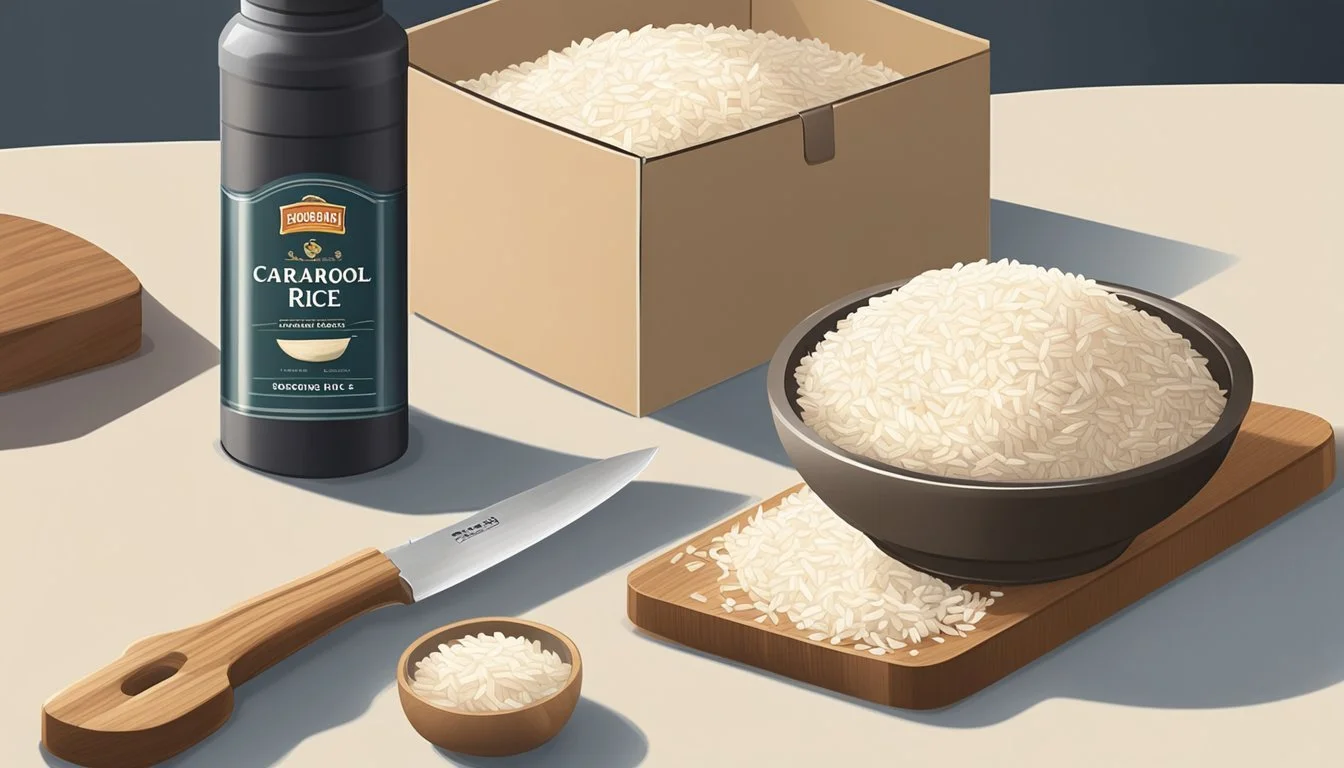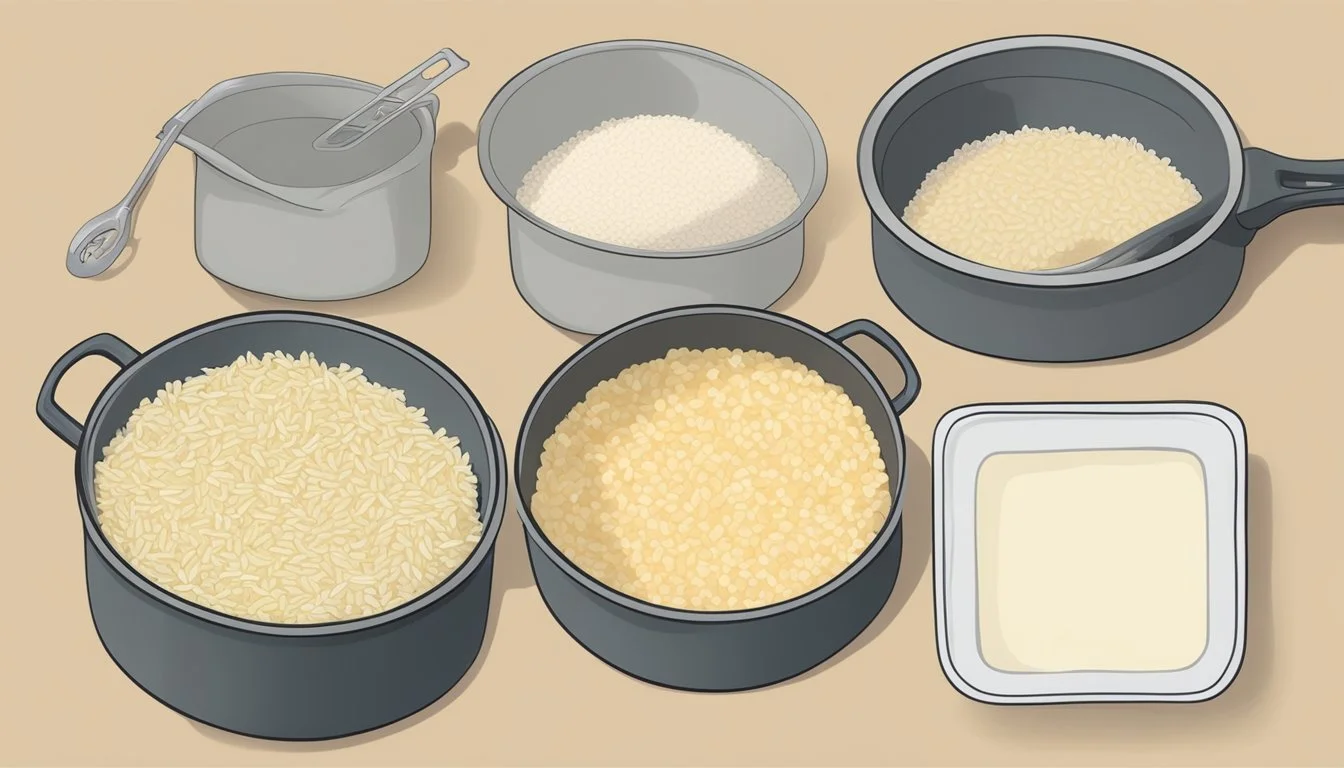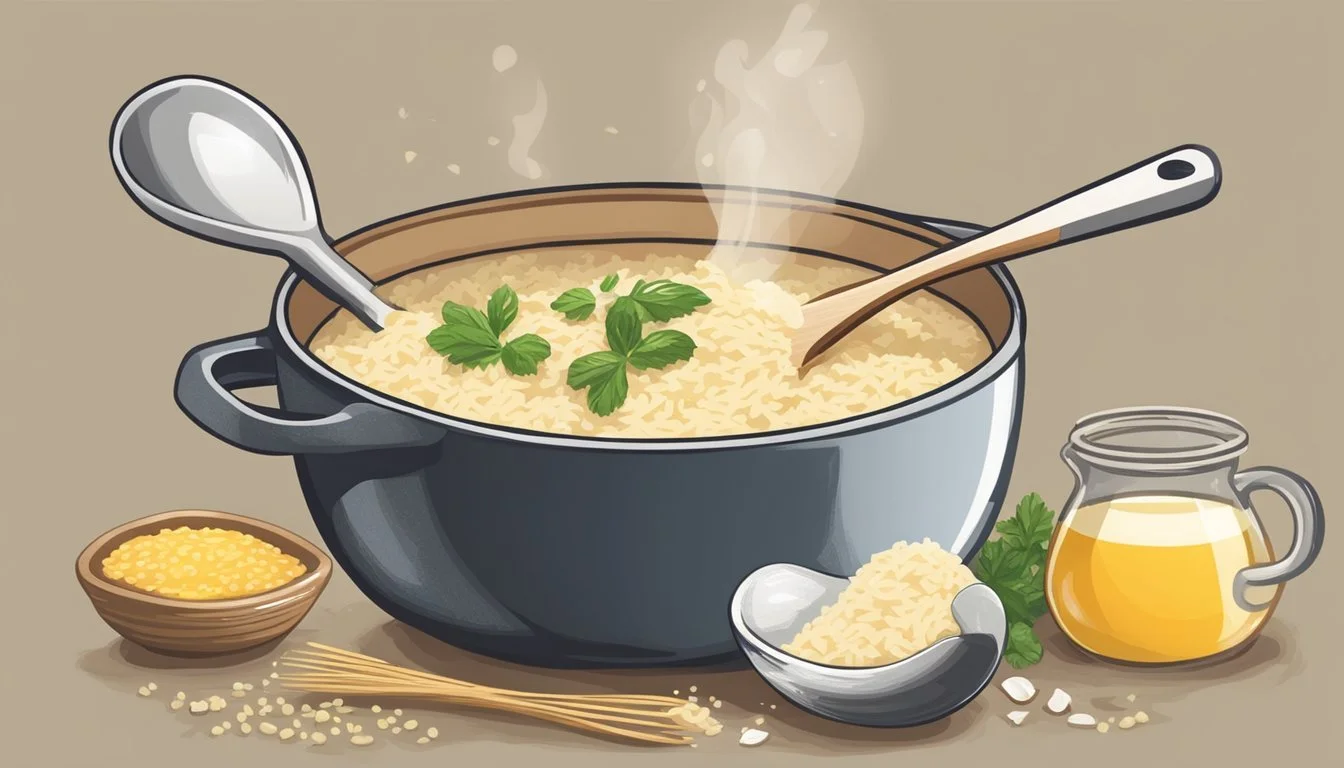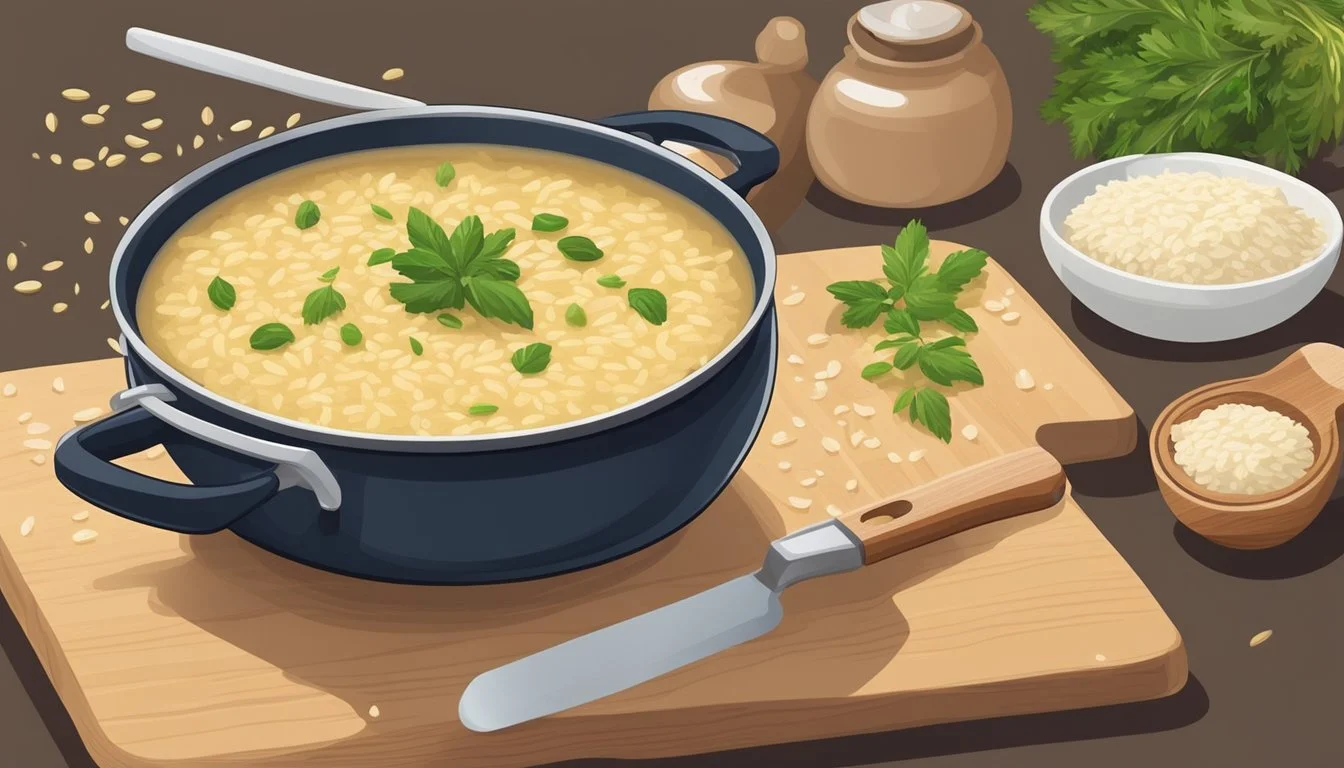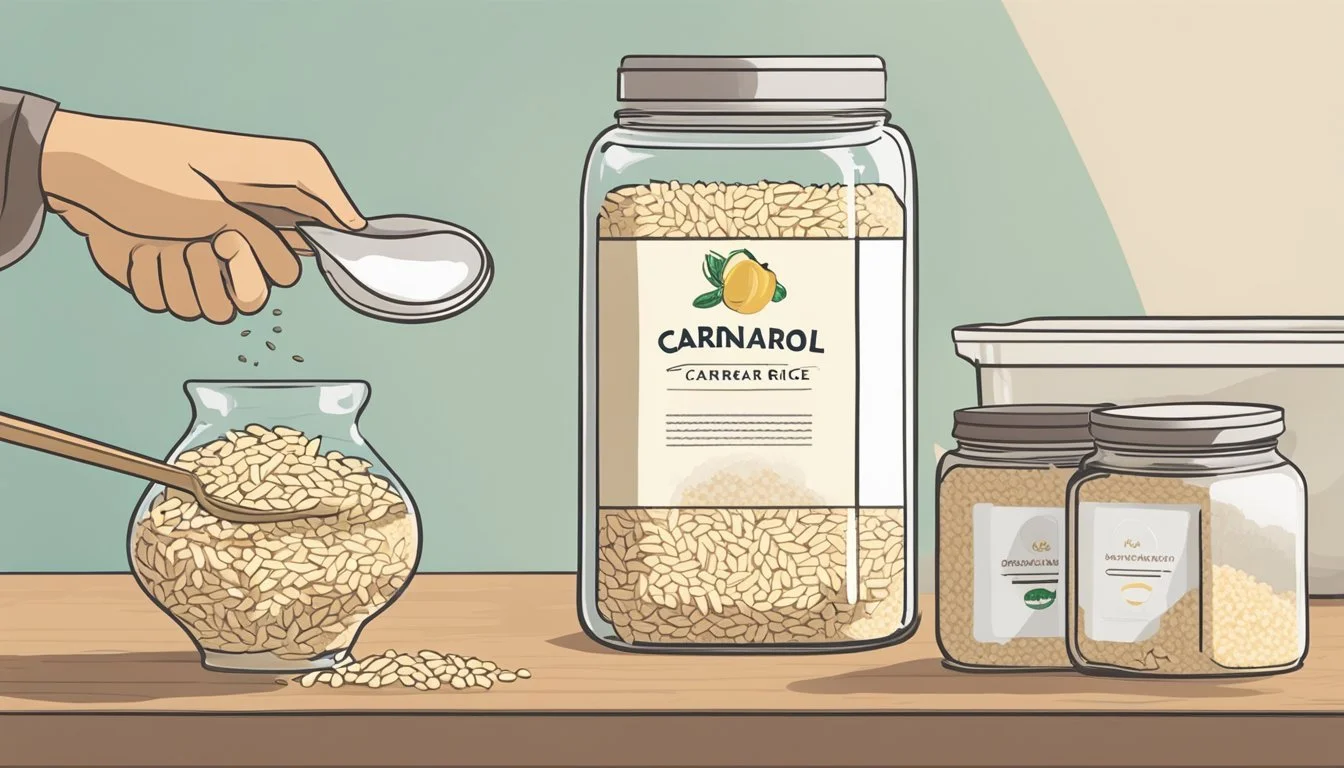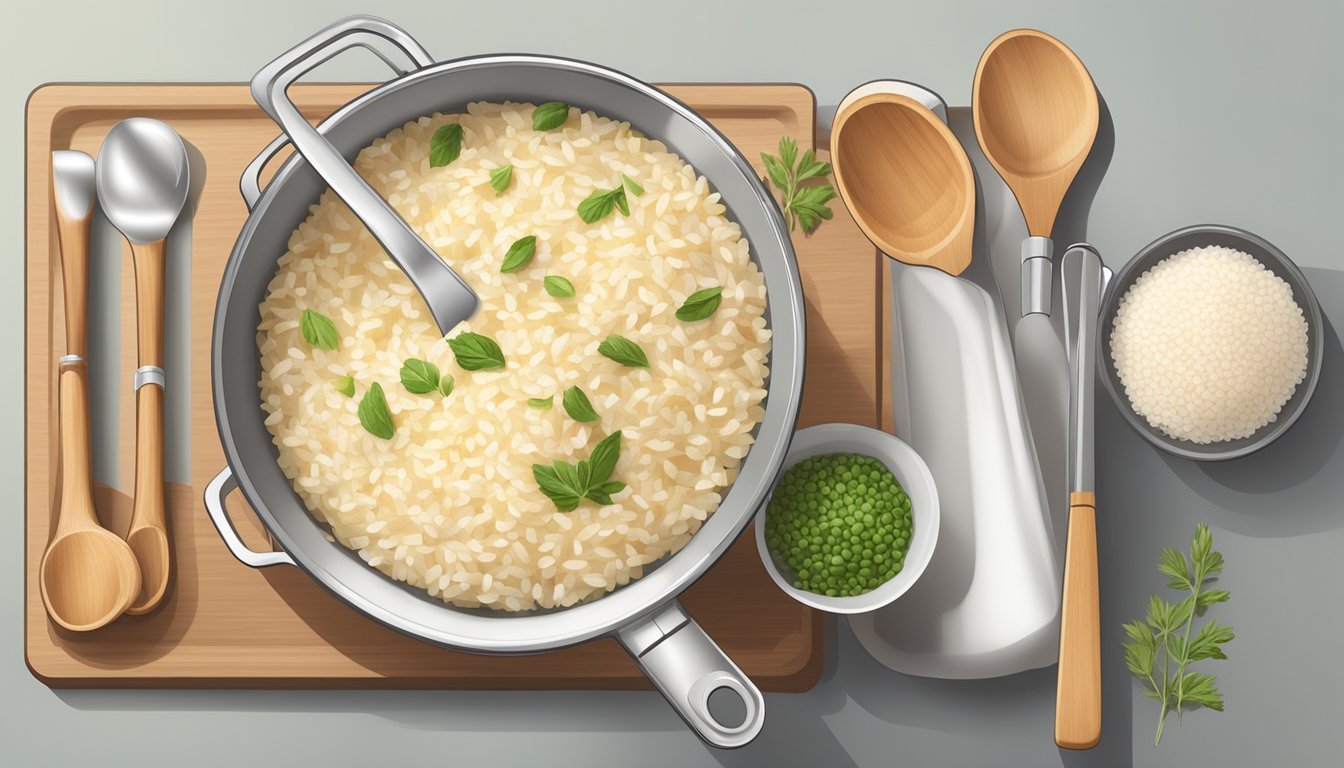How to Substitute Arborio Rice for Carnaroli Rice in Risotto
A Seamless Swap Guide
When crafting the perfect risotto, the choice of rice (What wine goes well with rice?) is paramount. Traditionally, arborio rice, a short-grain variety hailing from Italy, has been the go-to choice for this creamy dish. Its high starch content releases during cooking, creating the characteristic silkiness that risotto enthusiasts treasure. However, carnaroli rice, known as the 'king of risotto rice', is often favored by chefs for its slightly firmer texture and superior ability to hold shape during the slow stirring that defines risotto's cooking process.
Substituting arborio for carnaroli in risotto can work well, since both varieties have the starchiness required for risotto's texture. While arborio grains are shorter and tend to become softer quicker, they can still deliver a delightful risotto with a careful eye on the cooking time to prevent over-softening. One might find arborio's creaminess advantageous, considering it can absorb flavors robustly and offer a slightly more forgiving cooking experience for risotto newcomers.
To achieve the best results with arborio rice, understanding the nuances of cooking time and liquid absorption rates is invaluable, especially as arborio tends to cook slightly faster than carnaroli. It's also crucial to consider the gradual addition of stock, a technique at the heart of risotto's creation, ensuring the rice releases its starches slowly to achieve the dish's trademark creamy consistency. With these considerations, replacing carnaroli with arborio need not compromise the quality of the risotto if approached attentively.
Understanding Risotto
Risotto is an Italian dish known for its creamy texture and meticulous cooking technique, primarily involving specific varieties of rice that must release starch content during the cooking process to achieve the desired consistency.
Basics of Risotto Rice
The definitive feature of risotto lies in its rice, which is responsible for the dish's characteristic creaminess. The rice used in risotto must be high in amylopectin, a component of starch that contributes to the creamy texture once cooked. Two rice varieties stand out for risotto: Carnaroli and Arborio. Each grain retains a firmness, known as 'al dente', when cooked properly, indicating a slight resistance to the bite.
Carnaroli Vs. Arborio
Carnaroli rice, often referred to as the 'king of Italian rice', is prized for its high starch content and ability to maintain shape during cooking. This rice variety offers a forgiving nature due to its firm texture, even as it absorbs liquid and flavors. In contrast, Arborio is more widely available and recognized by its shorter, fatter grains. Arborio rice also has a high starch content but it is more prone to becoming mushy if overcooked. When replacing Arborio with Carnaroli in risotto, one might notice a slightly different, creamier texture in the final dish, and the grains may keep their shape better.
Risotto in Italian Cuisine
Risotto is an integral part of Italian cuisine and extends beyond a single recipe to a cooking technique commonly used across Italy. A successful risotto requires patience and attentive stirring, allowing the rice to slowly absorb the liquid and release its starch, leading to the signature creaminess. Italian chefs value this dish for its versatility in flavor pairing and its representation of Italian culinary skills - transforming simple ingredients into rich and elegant plates.
Preparing for the Substitute
When substituting Arborio rice for Carnaroli rice in risotto, the cook must consider the particular qualities of each rice type to ensure the dish maintains its intended texture and absorption characteristics.
Selection of Rice
Selecting a rice variety to replace Carnaroli requires understanding the unique properties of Arborio rice. Arborio is a medium-grain rice known for its firm texture and capacity to become velvety when cooked, while Carnaroli rice is often preferred for its superior ability to retain a slightly firmer center. The grains of both types are adept at absorbing flavors and contribute to a creamy texture in risottos.
Substitution Ratios
When substituting rice types, one should adhere to a 1:1 substitution ratio. Carnaroli and Arborio have similar cooking times, and they both require gradual addition of liquid to achieve their characteristic risotto texture.
Rice Type Texture Absorption Cooking Time Arborio Velvety, less firm High Approximately 18 minutes Carnaroli Firm to the bite Very high Approximately 18 minutes
Use the same volume of Arborio as you would Carnaroli. The cook may need to slightly adjust the liquid to achieve the desired creamy consistency, as Arborio could absorb more liquid during cooking. The risotto may also cook to desired doneness a bit quicker with Arborio rice.
Cooking the Risotto
When substituting Arborio rice for Carnaroli in risotto, cooks should focus on adjusting the cooking techniques to manage the texture and integrate flavors. Arborio rice, while slightly softer than Carnaroli, can still produce a creamy, al dente risotto with careful attention to detail.
Cooking Techniques
Arborio rice has a shorter cooking time than Carnaroli, typically requiring around 18 minutes to reach al dente texture. It's essential to stir the rice frequently to release its starches, which contribute to the risotto's creaminess. Consistent temperature is also crucial; keep the broth at a gentle simmer and add it in increments to the rice to avoid a mushy or overly sticky consistency.
Managing the Texture
Arborio rice is more prone to becoming mushy if overcooked due to its softer texture. One should aim for a firm bite, or al dente, by tasting the rice regularly as it nears the end of cooking. If the rice feels too firm, it may require additional broth and cooking time. A creamy yet firm consistency is the goal, avoiding a final product that is sticky or lacks structure.
Flavor and Ingredient Integration
To enhance the flavor of the risotto, incorporate broth that complements the other ingredients, whether meat, seafood, or vegetables can be added to create depth. The natural nutty flavor of Arborio rice can be accentuated by toasting the grains gently in butter or olive oil before adding any liquid. Layer in the ingredients methodically, ensuring each one melds with the creamy texture without overpowering the dish's delicate balance.
Alternative Rice Varieties
When substituting Arborio rice in risotto, one must consider rice varieties that can mimic the creamy texture and absorb flavors well.
Common Alternatives to Arborio
Among the Italian rices suitable for risotto, the Vialone Nano rice is prominent. It's the choice for those wanting a very creamy texture with quicker cooking time due to its smaller grain size. Another notable variety hailing from Piedmont, Italy, is Carnaroli rice, often dubbed as 'the king of rices'. It provides a similar starch content and firmness, offering an excellent alternative to Arborio.
Vialone Nano: Grown in the Veneto region, ideal for a creamy and soft texture.
Carnaroli Rice: Features a nutty taste, appreciated for maintaining structure while creating creaminess.
Non-Traditional Substitutes
For those seeking non-traditional substitutes for Arborio rice, several grains can lend a similar texture to risotto, albeit with varying results. Farro and barley are whole grains that contribute a chewy texture and are substantial alternatives.
Farro: An Italian grain with a nutty flavor and chewy texture, farro has a hearty quality.
Barley: Particularly Pearled Barley, which is polished to remove the bran layer, is a suitable risotto stand-in.
Other grains like bulgur wheat, brown rice, and even medium-grain rice varieties such as sushi rice and jasmine rice can be used, keeping in mind they won't provide the trademark creaminess of Arborio but will still produce a satisfying dish.
Bulgur Wheat: A whole grain that can lend a different texture and is healthier.
Brown Rice: Has a firmer texture and takes longer to cook but adds a whole-grain twist to the dish.
Sushi Rice: Often sweeter, it can create a sticky risotto variant.
Jasmine Rice: Its floral aroma brings a new dimension to the dish, although it lacks the creamy texture of Arborio.
Tips and Tricks
When substituting Arborio rice for Carnaroli in risotto, it is crucial to manage the starch content and cooking time to guarantee that perfect creaminess expected of this signature dish.
Achieving the Perfect Creaminess
Carnaroli rice is prized for its high amylopectin content, which contributes to risotto's desirable creaminess. Its balance of amylopectin and amylose ensures that each grain maintains structure while releasing starch. To replicate this with Arborio, one has to stir the rice frequently as it cooks to incrementally release the starch molecules without turning the risotto into mush.
Stir continuously and gently to coax out the starches.
Maintain a simmering broth to achieve optimal starch release for a creamy texture without overcooking.
Avoiding Common Pitfalls
Avoid overcooking Arborio as it can become gummy or too mushy.
Arborio rice tends to absorb liquid at a quicker rate, making monitoring essential.
Use a lower heat and shorter cooking time than you would with Carnaroli to prevent the grains from becoming overcooked.
By adhering to these guidelines, one can substitute Arborio for Carnaroli and still produce a risotto with the creamy consistency and texture one strives for, avoiding the common results of overly sticky rice or a compromised dish.
Comparing Arborio and Other Grains
Arborio rice is a staple for risotto dishes due to its creamy texture and high starch content. When considering a substitute such as carnaroli rice or other grains, it's important to examine the nutritional and textural aspects, as well as the versatility of these alternatives in various recipes.
Nutritional and Textural Differences
Arborio rice, known for its starchy quality and ability to absorb liquids, results in a creamy texture ideal for risotto. In contrast, carnaroli rice, often hailed as the 'king of risottos', is also starchy but holds its shape a bit better, providing a firmer bite.
Grain Texture Starch Content Nutritious Value Arborio Creamy, softer High Moderate nutritional profile Carnaroli Firm, less likely to overcook High Similar to Arborio Farro Chewy, hearty Lower Higher in fiber and protein Quinoa Fluffy, slightly crunchy Lower High in protein and essential amino acids Basmati Light, separate grains Moderate Fragrant, with a lower glycemic index
When substituting Arborio with other grains like farro, quinoa, or basmati, one should adjust the cooking technique and liquid ratios to maintain a pleasing texture in dishes such as rice pudding or rice salads.
Usage Beyond Risotto
Arborio rice's high starch content makes it perfect for creamy dishes, but its substitutes bring a variety of textures and flavors to the table. Quinoa and farro, for instance, are excellent additions to salads due to their firmer textures. They can provide a nutritious twist to risotto-like dishes, although they may not yield the exact creaminess of Arborio.
Basmati, though usually known for its aroma and fluffy texture, can be used in a pudding where its grains remain distinct, providing a different sensory experience. Each grain offers unique qualities that can enhance traditional recipes like rice pudding or innovate new versions of rice salads, marking their utility beyond just risotto.
Risotto Variations and Recipes
When substituting Arborio rice with Carnaroli, one can explore a variety of risotto recipes, each hailing from different Italian regions with distinct flavors and ingredient combinations.
Regional Risotto Specialties
Piedmont: Home to the prestigious Carnaroli rice, often referred to as the "king of rice", Piedmont offers the classic Risotto al Barolo, where the rice is cooked in Barolo wine, producing a rich and luxurious flavor.
Milan: Famous for its Risotto alla Milanese, this creamy dish is characterized by the use of saffron, which imparts a vivid golden color and unique taste. It typically features high-quality Carnaroli rice which, due to its superior hold during cooking, maintains its texture in this historic recipe.
Lombardy: In Lombardy, saffron is also a key ingredient in many risotto dishes. It is a rice-producing region known for its Japonica varieties, including both Carnaroli and Arborio, which are often used interchangeably in dishes such as Risotto alla Pilota, where the rice's ability to absorb flavors comes to the forefront.
Creative Risotto Creations
Mushroom Risotto (What wine goes well with mushroom risotto?): Arborio rice's absorbency is ideal for mushroom risotto, as it sop up the earthy broth and mushroom juices while remaining al dente.
Ingredients: Arborio rice, a mix of wild mushrooms, chicken or vegetable stock, white wine, Parmesan cheese, garlic, onions, and herbs.
Notes: Use a rice producer like Lencino or Emiliano Carnaroli for high-quality grains that elevate the dish.
Seafood Risotto: The starchiness of Carnaroli rice is perfect for seafood risotto as it balances out the delicate flavors of shrimp, scallops (What wine goes well with scallops?), and squid.
Key Technique: Sauté the seafood separately to maintain texture, then combine with Carnaroli rice cooked in fish stock.
Variations: Introduce shellfish for a more authentic touch or include saffron for a Milanese twist.
Asparagus (What wine goes well with asparagus?) Risotto: Both Arborio and Carnaroli rice are suitable for capturing the freshness of asparagus in a springtime risotto.
Best Practices: Roast or blanch the asparagus to preserve color and texture before adding it to the risotto.
Cheese Pairing: A shaving of Parmesan or Pecorino adds depth and a salty counterpoint to the green notes of asparagus.
Buying and Storing Rice
When considering Arborio rice substitutes like Carnaroli or Vialone Nano for Italian risotto, understanding the labeling and storage practices ensures the rice maintains its cooking quality. Here, we focus on the specifics of purchasing and preserving different types of rice for optimal results in your risotto.
Understanding Rice Labels
When selecting a rice for risotto, shoppers should look for terms such as Arborio, Carnaroli, and Vialone Nano on the packaging. These are all high-starch rices, with Carnaroli and Vialone Nano often being preferred for their firmer texture and better absorption qualities.
Arborio: Typically used for its creaminess; widely available.
Carnaroli: Known as the "king of risotto rice"; offers a balance between creaminess and structure.
Vialone Nano: A good substitute with a shorter grain; absorbs flavors well.
Be aware that the labels might also indicate whether the rice is white or brown, affecting the cooking time and texture. White rice varieties will give the classic, creamy texture, while brown rice options bring a nuttier flavor and chewier consistency to the dish.
Storage Tips for Optimum Quality
To keep rice in the best condition until its use, proper storage is essential. For uncooked rice (how long does cooked rice last?):
Store in a cool, dry place.
Keep in an airtight container to avoid moisture as well as odors absorbing into the rice.
Brown rice types contain more oils due to the bran layer and therefore can become rancid. It is recommended to store brown rice in the refrigerator to extend its shelf life.
Once the rice is cooked:
Refrigerate leftovers within two hours of cooking.
Keep cooked rice (how long does cooked rice last?) in airtight containers or cover with plastic wrap to prevent drying out.
By following these storage guidelines, one can ensure that the flavor and texture quality of their risotto rice, whether Arborio or a substitute like Carnaroli or Vialone Nano, is preserved for the best culinary results.
Conclusion
In the realm of risottos, while Carnaroli rice is often hailed for its firmer texture and exceptional creaminess, substituting it with Arborio rice is a customary practice owing to Arborio's wide availability and forgiving nature. The differences between these two grains lie in their starch content and grain structure, where Arborio tends to have a higher starch release but a softer bite when compared with the al dente consistency of Carnaroli.
When substituting Arborio for Carnaroli, one should adjust the liquid ratios and cooking times, monitoring the dish closely to prevent the rice from becoming too mushy. Arborio requires a slightly shorter cooking duration and careful attention:
Start with a 1:1 ratio substitution.
Assess consistency frequently, as Arborio can absorb less liquid.
The decision to choose between the two types of rice often comes down to personal preference. For those who value ease of use and a creamy texture that forgives minor cooking inconsistencies, Arborio is an excellent choice. If one favors a risotto with distinct grains and a bite that holds up firmer under the pressure of slow stirring, then Carnaroli will be missed in the dish.
Ultimately, both rice varieties bring different qualities to the table. Enthusiasts may conduct a parallel cooking test to determine their favored texture and creaminess level, making an informed decision for their next risotto endeavor.

